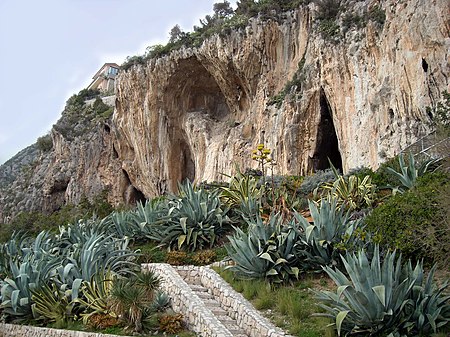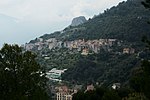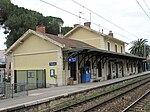Balzi Rossi
Archaeological sites in LiguriaAurignacianCaves of ItalyGravettianLandforms of Liguria ... and 1 more
Upper Paleolithic sites in Europe

The Balzi Rossi caves (Ligurian: baussi rossi "red rocks") in Ventimiglia comune, Liguria, Italy, is one of the most important archaeological sites of the early Upper Paleolithic in Western Europe. Riparo Mochi remains, evidence for the earliest presence of modern humans in Europe (early Aurignacian, 42,000 years ago). Grimaldi Man (Gravettian, c. 25,000 years) Venus figurines of Balzi Rossi (Gravettian, c. 22,000 years)
Excerpt from the Wikipedia article Balzi Rossi (License: CC BY-SA 3.0, Authors, Images).Balzi Rossi
Via Balzi Rossi,
Geographical coordinates (GPS) Address Phone number Website Nearby Places Show on map
Geographical coordinates (GPS)
| Latitude | Longitude |
|---|---|
| N 43.784 ° | E 7.534 ° |
Address
Museo Preistorico Nazionale dei Balzi Rossi
Via Balzi Rossi 9
18039
Liguria, Italy
Open on Google Maps










